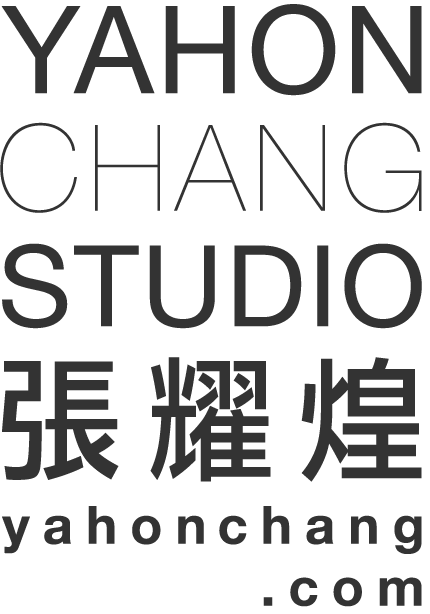According to traditional Chinese painting theory, at the most extraordinary level of creation—the “untrammeled” (yipin) class—the artist’s character is the essential element of his practice.[i] This is a key to the development of Chang’s career, more important than any technical accomplishment. While he sought formal education in Chinese brush-and-ink painting and has throughout his life found inspiration in the works of a panoply of historical painting masters, both Eastern and Western, his works defy categorization. Painted and performed in bursts of instinctual creativity, they cannot be judged in ordinary terms: they should be considered of the untrammeled class. For over a thousand years, Chinese art history has maintained the untrammeled as a special category for artists who function outside the regular, codified desiderata of painting.[ii] An untrammeled painter does not respect the supposed apogee of brushwork and composition, instead making freely inventive use of the materials at hand. It is thought that such an approach to painting invariably reveals the quality of the artist’s character, and this is to be appreciated along with the work of art embodying it.
As compelling and immediate expressions of being, almost all Yahon Chang’s paintings impress the viewer in a direct and powerful manner. Simply put, with the eye, the body, with space, and through time, the artist reaches the heart. This is his goal as one who seeks spiritual enlightenment, and he achieves that goal through his creations. He may establish a rapport with the viewer through an immediate visual impression, often dominated by the eyes of the subject, which attract the viewer’s gaze, inviting or commanding a deep-felt connection, or rejecting or deflecting a tie. His painting Untitled (Meditation series) (2003), for example, makes an overall claim on the viewer’s attention, before drawing her to contemplate the enthrallingly luminescent eyes, their steady glow suggesting the contained energy of the meditating body.Another kind of rapport involves the body: as is the case with some modes of traditional Chinese painting and calligraphy, as the artist wields the brush, he inscribes his physical movements into the paper, and the viewer can then recapture and even feel those movements by mentally following the path of the brushstrokes in the finished work of art, as in Hen (Animal series), exuberantly rendered with xieyi (“writing the idea,” or freely expressive) brushwork (2011). There, the viewer can follow the swirling energy of the brushstrokes that comprise the hen’s body. No special training is required to follow such brushstrokes—sincere effort will suffice. A third way of connecting with the audience involves space. Chang has expanded—literally—the purview of his oeuvre: since 2011, he has widened the physical impact of his works by creating large, site-specific, all-enveloping installations. For his 2015 Venice Biennale collateral exhibition, for example, he covered a portion of the interior of a building annexed to a secularized church, including floor, ceiling, walls, and windows, with paintings and digital prints of human and animal figures: The Question of Beings. Standing in the space, surrounded by Chang’s figures, one is led to contemplate essential issues that engage us all as beings living with the knowledge of our limited lifespan. And finally, the artist has introduced the element of time, performing large-scale, site-specific gestural art. For his Poetry of the Flow performance in Manifesta 2018, wielding a brush nearly the length of his body, he activated the space through the powerful movements of his brush. The out-sized brushstrokes’ individual paths made clear their passage through space and time, creating a spectacle whose energy remained long after the performance’s conclusion. As vehicles for communication, these four ways—eye, body, space, and time—can be equally powerful. To follow the “path of peace” and to communicate directly via the eye, by interjecting his body into the creation, by immersing the viewer in his creation, and by taking the viewer on a time-based journey—these are the key methods and drivers of thoughts and emotions in Chang’s oeuvre. And crucially, as Chang’s oeuvre has evolved, the performative aspects of writing and painting with Chinese brush and ink have emerged as the essence of his practice.
— Britta Erickson exerpts from The Art of Yahon Chang—“One Who Knows the Path of Peace”—and Shares It with Cats, Dogs, and Other Fellow Travelers on This Earth
[i] I refer to artists in the masculine gender because, historically, by far the majority of painters in the Chinese pantheon have been male.
[ii] Around 1,500 years ago, art theorists devised a system of Three Classes and Nine Grades. The Classes indicated upper, middle, and lower, and the Grades were a similar scale within each Class. Outside of these nine was yipin, added in the later Tang.
在傳統中國繪畫理論中,「逸品」可謂繪畫的最高級別;在這一境界,畫家自身的性格品質往往是他藝術創作的根本要素。[i] 這也是張耀煌藝術生涯發展的關鍵所在,甚至比技法上的成就更為重要。他雖然接受了傳統中國水墨畫的正規教育,亦不斷從東西方繪畫大師的作品中汲取靈感,但他的作品卻難以歸類。他的繪畫與行為藝術源自一種本能的創造力的爆發,是無法用普通術語來評判的,應被歸為逸品之列。一千多年以來,中國藝術史一直將逸品作為一個特殊的類別,歸為此類的藝術家往往跳脫常規之外,另闢蹊徑。[ii] 他們並不尊崇筆法與構圖的極致,而是基於手頭的材料進行自由創造和發揮。這樣一種創作方式無疑會將藝術家的人格秉性融入其作品之中,因此欣賞畫作的同時,也是在欣賞它背後所承載的藝術家的性格特徵。
張耀煌的作品有一種極具說服力且直接的表達方式,幾乎所有畫作都以這種直接而有力的方式給觀者留下深刻的印象。簡而言之,通過眼睛、身體、空間和時間,藝術家能夠直擊觀者心靈深處。這是張耀煌追求精神頓悟的目標,而他則藉由作品來實現這一目標。他能夠通過直接的視覺印象與觀眾建立一種緊密而融洽的關係,這個過程通常由描繪對象的眼睛來主導,它首先吸引觀者的目光,邀請或命令觀者與之建立一種深刻的聯繫,有時也可能是拒絕或轉移這種連接。例如2003年的《無題》(《冥想》系列),畫面整體首先吸引觀者的注意力,隨即將其目光鎖定在那雙散發著迷人光芒的眼睛上,那穩定而持續性的光芒傳達出冥想者體內所蘊含的能量。另一種與觀者之間的聯繫則與身體和動作相關:藝術家揮筆作畫的過程仿佛將其身體的動作由筆尖注入畫紙之中,觀者欣賞作品時,能夠在腦海中跟隨畫家的運筆,再現甚至感受到藝術家創作時的身體動作,這與某些傳統中國繪畫和書法形式如出一轍。2011年的作品《母雞》(《動物》系列)中,生機勃勃的寫意筆觸勾勒出雞的身體,觀者能夠跟隨旋轉的線條感受其中的力量。跟隨這樣的筆觸並不需要特別的訓練——真誠的努力足矣。與觀者建立聯繫的第三種方式涉及空間:張耀煌擴展了他作品的空間範圍。自2011年來,他通過創作大型、場域特定、全方位覆蓋的裝置,擴大了作品的空間維度與感官上的衝擊。例如,2015年威尼斯雙年展的平行展中,張耀煌用人物和動物形象的繪畫及數位拼貼影像,覆蓋了聖瑪莉亞聖殤學院(一座轉為俗世用途的教堂)附屬建築的部分內壁,包括地面、天花板、墻壁、窗戶等,構成場域特定裝置作品《蒼生問》。置身其中,被張耀煌的動物和人物形象所包圍,觀者開始思考我們作為芸芸眾生,基於有限的生命所賦予的智慧,所要面對的根本問題。最後,張耀煌引入了時間這一重要元素,進行了大規模、特定場域的行為藝術。2018年義大利帕勒莫的 Manifesta雙年展期間呈現的行為創作《流動的詩意》 中,張耀煌揮舞著接近他身體長度的毛筆,通過強有力的運筆動作激活了整個空間。超大的筆觸充滿張力,每一筆都清晰地穿越了時空,創造了一場無比震撼的視覺奇觀,表演結束後良久,能量猶存。作為交流的載體,以上這四種方式——眼睛、身體、空間、時間——可以具有相同的效力,不分伯仲。嚮往內心的安樂,用眼睛直接交流,將身體嵌入創作,讓觀者沈浸作品之中,引觀者踏上時間之旅——這些是張耀煌作品中思想和情感的關鍵表達方法和驅動力。更重要的是,隨著他藝術歷程的不斷發展,中國書法繪畫中筆墨的表演元素已逐漸成為其藝術實踐的精髓。
— 林似竹 《張耀煌:心向安樂、眾生為伴的藝術之旅》
[i] 此處藝術家的人稱代詞用男性的「他」,因為從古至今,中國藝術史上名留史冊的傑出藝術家絕大多數為男性。
[ii] 約1500年前,中國藝術理論家將繪畫分為三階九品,三階分為上、中、下,九品是每一階的細分品級。逸品在這九品之外,晚唐時期才引入。

